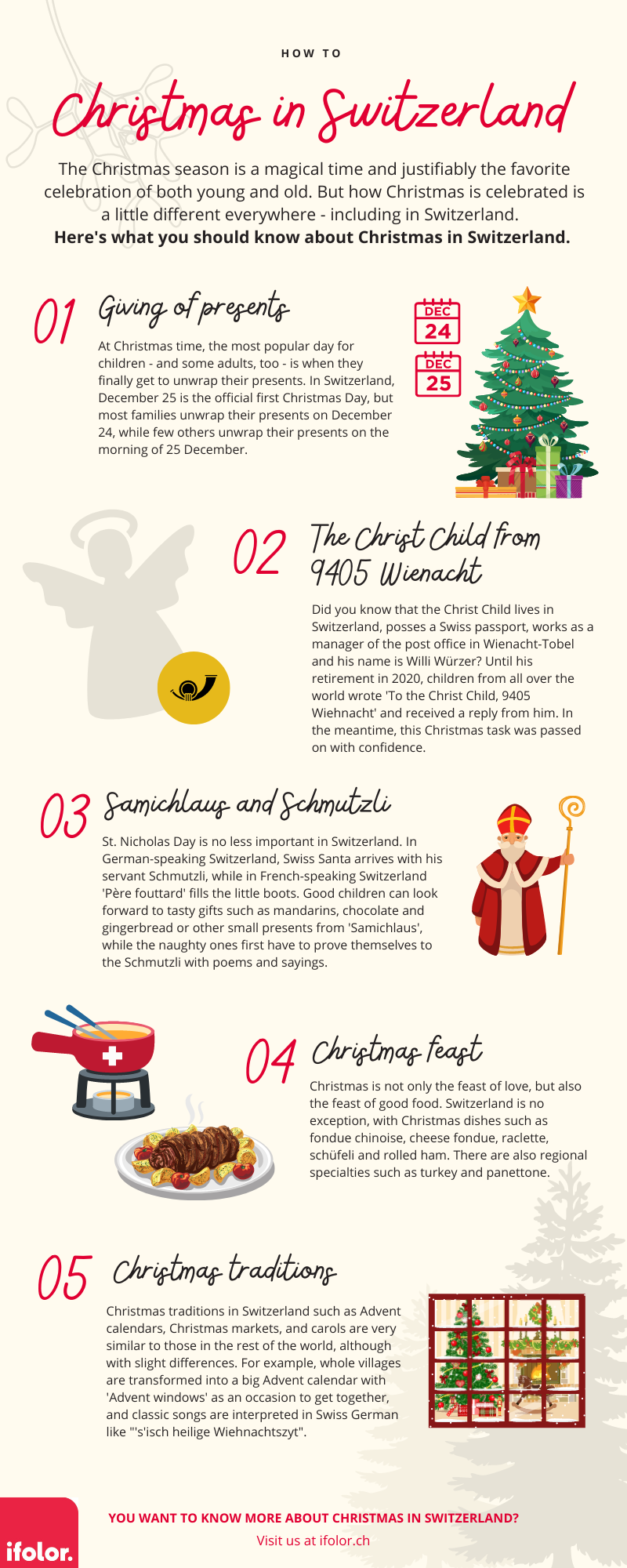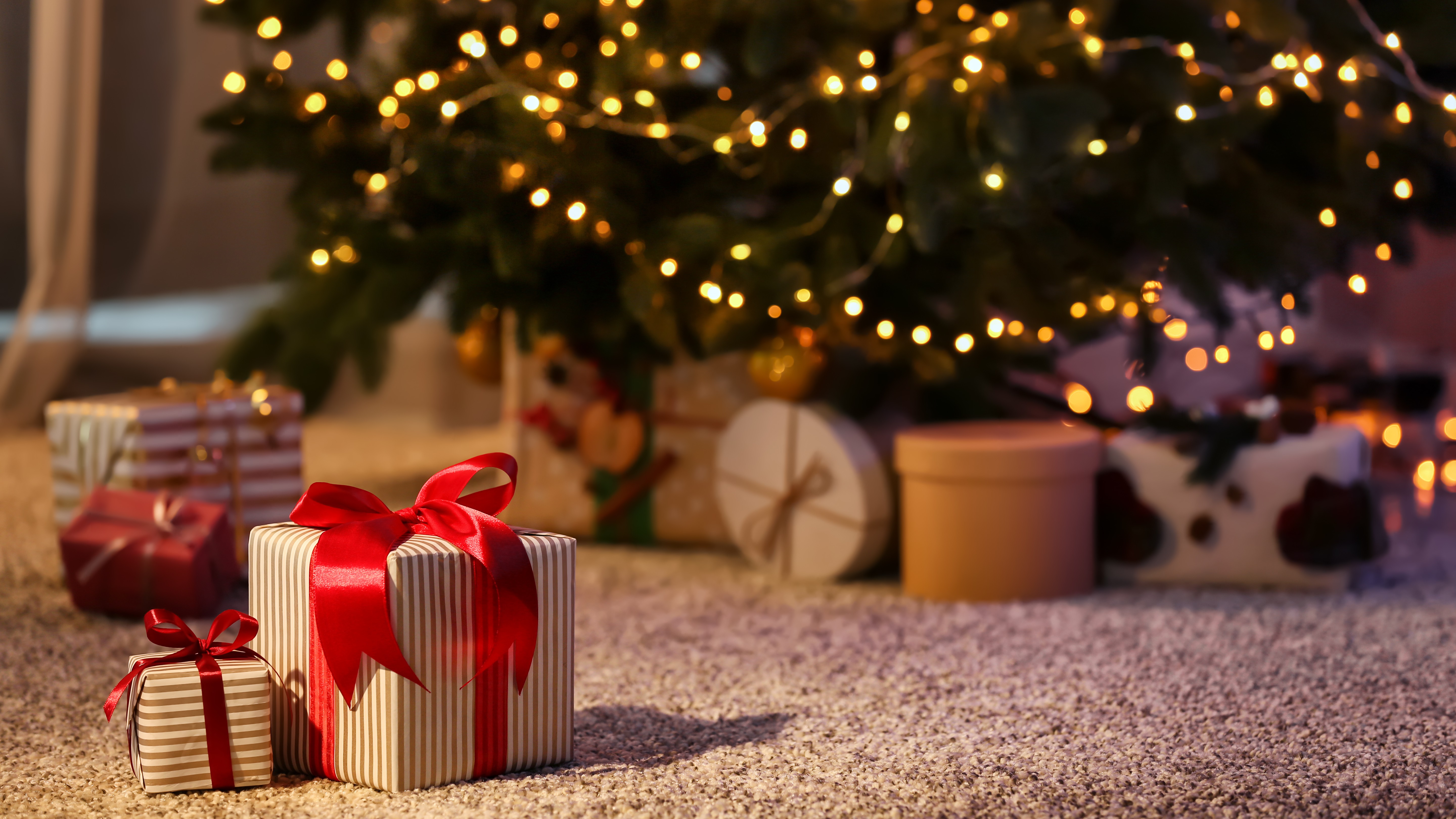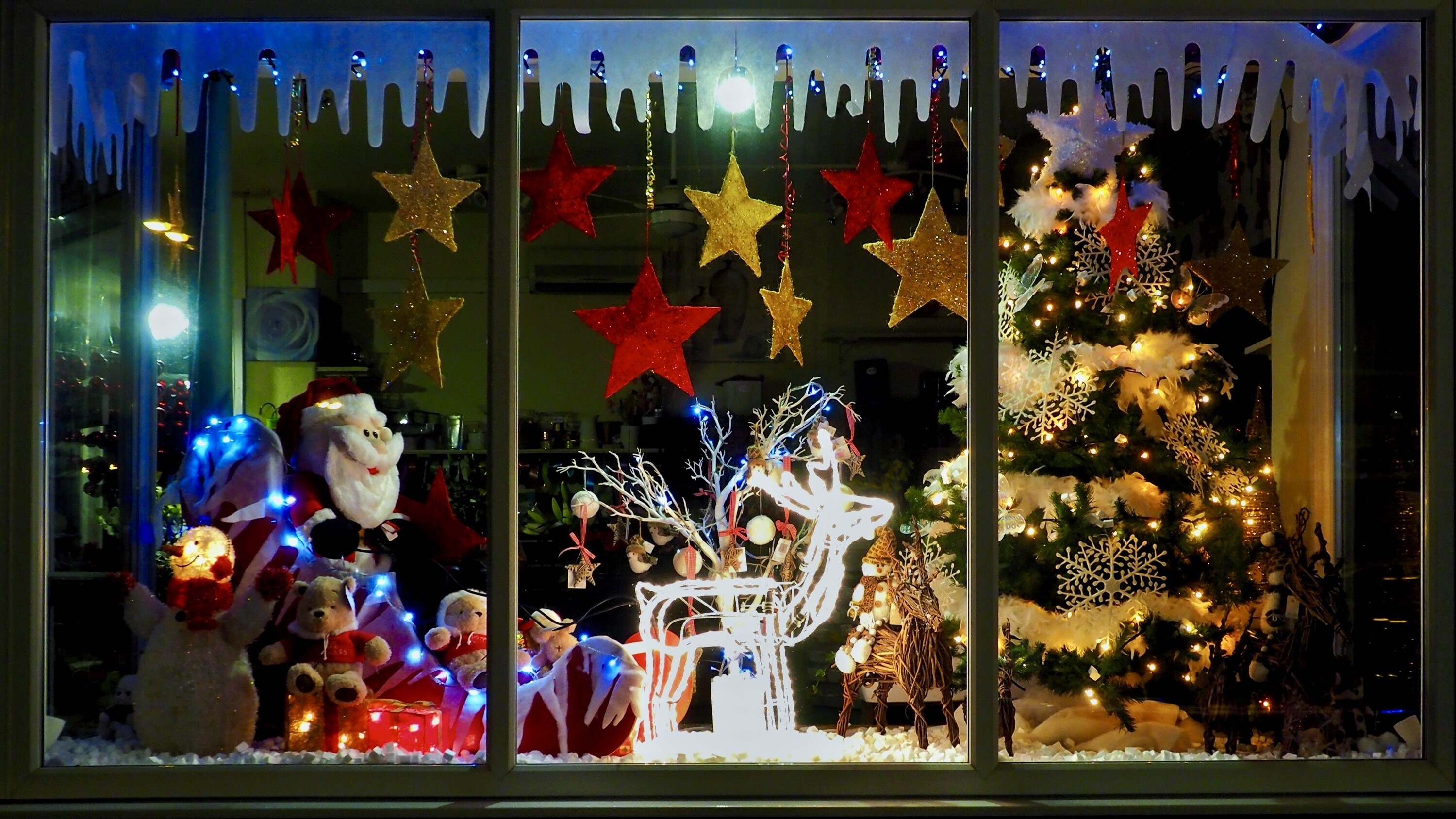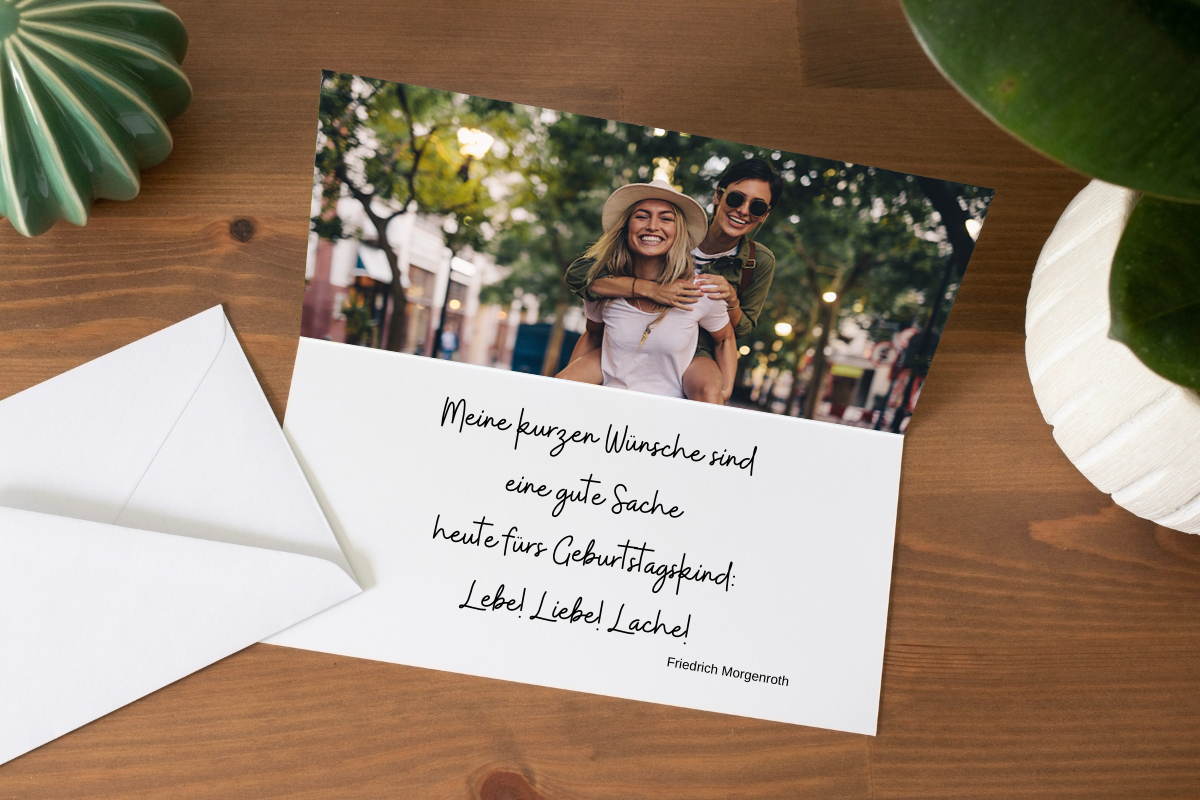
Merry Christmas everyone: How Christmas in Switzerland differs from Christmas around the world
Colourful lights in the streets, rosy cheeks from drinking mulled wine and Christmas music in shops and on the radio. Christmas time is a magical time and justifiably the favourite celebration of both young and old. Christmas spirit is overflowing all over the world, and there are different customs and traditions in every single country. For instance, Switzerland has its very own traditions that make Christmas so special. At ifolor we will show you what you definitely need to know about Swiss Christmas, and how its customs differ from those of other countries

When do people exchange presents in Switzerland?
At Christmas time, the most popular day for children (and definitely some adults) is when they finally get to unwrap their presents. But not all countries do this on the same date. Whilst in Great Britain, the USA, Italy and France, presents are exchanged on the morning of 25 December, presents aren’t exchanged in Spain until 6 January, Epiphany. In Germany, Sweden, Liechtenstein and Austria, on the other hand, presents are exchanged with loved ones on Christmas Eve. In Switzerland, 25 December is the official first Christmas Day, but (just like in Germany) most families unwrap their presents on 24 December. Few other families, in contrast, unwrap their presents on the morning of 25 December.

Gift bringers and the Swiss Christ child with the post code 9405
Not everywhere are presents delivered by Santa Claus or Father Christmas flying in his sleigh and coming down the chimney. For example, Russian children are given their presents by Ded Moroz, (Grandfather Frost), with his grand-daughter Snegurotschka (Snow Maiden). In the Netherlands, on the other hand, Sinterklaas brings presents on 5 December, and in Luxembourg on 6 December. Whilst in North Germany Santa Claus brings presents, in South Germany it’s the Christ Child who does this. Switzerland also has different opinions on who brings the presents. Western Switzerland believes it’s Père Noël, Father Christmas. But the rest of Switzerland, South Germany and Austria claims it’s the Christ Child. That’s no wonder because the Christ Child is said to live in Switzerland and possess a Swiss passport. His name is Willi Würzer. The Christ Child is the former postmaster of Wienacht-Tobel. Wienacht-Tobel is a village in the canton of Appenzell Ausserrhoden, and Wienacht is Swiss German for Christmas. It goes without saying that the Christ Child lives in Christmas, so Swiss children, as well as children from Brazil, Japan and other countries, have long been addressing their wishes and greeting cards to “The Christ Child, 9405 Wienacht”. Up to his retirement in 2020, the Christ Child Willi Würzer read and answered every single letter. In continuation of this tradition and to ensure that importantmatters are still addressed, a family-run company is now assuming the role of the Christ Child in Wienacht.
Samichlaus and Schmutzli (the Swiss Santa and his sinister helper)
At Christmas time, people all over the world don’t just look forward to Christmas Day. In many countries, 6 December is equally significant at Christmas. In Switzerland, too, this day is celebrated as Samichlaustag (St Nicholas’ Day). Instead of Santa and his elves, Saint Nicholas is accompanied by his servant. In German- and Italian-speaking Switzerland, he is called Schmutzli or Butzli, whereas in French-speaking Switzerland he is known as Père fouettard. Depending on whether it is a Catholic or Protestant region, Samichlaus either appears as a red and white bishop or as an old man with a long beard and staff in hooded robes. Unlike Germany, he does not come in the morning, but instead on the eve of 6 December with his book that tells him whether children have been naughty or nice this past year. However, naughty children are given the opportunity to redeem themselves by performing Christmas poems and Samichlaus sayings to be rewarded with Samichlaus’ good advice and little presents such as mandarins, chocolate, gingerbread and nuts. In many regions of Switzerland, during this time Santa Claus marches are held such as the Claus-Chlöpfen in Lenzburg or the Klausjagen in Küssnacht am Rigi.
Swiss Advent
Advent is the time when people prepare for and get in the mood for Christmas. To ease the wait for Christmas, in many countries it is customary to open the door of an Advent calendar each day, and on the four Sundays before Christmas a candle is lit on the Advent wreath. This Christmas tradition is also honoured in Swiss households. Particularly in German-speaking Switzerland, Advent is sweetened even more by using it to share beautiful and contemplative moments with many people. For instance, every year, many places throughout Switzerland decorate “Advent windows”. These are originally from Aargau, and help to bring together all the villagers. In reality, these are huge Advent calendars because 24 villagers each decorate a window. Depending on the size of the village, a draw is made to decide who will decorate their window for which calendar number. Every night when it gets dark a new Advent window is then unveiled. The residents usually gather there one evening for an aperitif to admire the windows together. This tradition not only brings together villagers, but is also the perfect opportunity for newcomers to meet people and get to know their neighbours. The Advent windows can usually be admired until 6 January, and it is worth discovering them all on a winter stroll.

What do the Swiss eat for Christmas dinner?
Christmas is not only the festival of love, but it is also the festival of good food. It is no coincidence then that one of the most popular New Year’s resolutions is to join the gym. In addition to all delicacies that can be enjoyed at the Christmas markets, many countries also have a traditional Christmas meal. The English love their turkey and Christmas pudding on Christmas Day, whilst many families in America serve a Christmas ham with corn and beans. In Eastern European countries such as Poland and the Czech Republic, fried Christmas carp and potato salad are often served. Potato salad with sausage is a popular Christmas Eve meal in Germany, followed by the traditional Christmas goose on Christmas Day. For Filipinos, roasted pork (lechon) is their Christmas highlight, whilst the Japanese often simply celebrate their Christmas by eating KFC in front of the TV. In Switzerland, on the other hand, there is no typical Christmas dinner, and each family has their own traditional meal. Furthermore, Christmas meals differ from region to region. In general, meat fondue, cheese fondue, raclette, pork shoulder and smoked ham are popular for Swiss Christmas dinner. Depending on the region, the following meals are traditionally served:
- German-speaking Switzerland: Old tradition of classic roast and potato salad
- Western Switzerland: Poultry, particularly turkey, which in French-speaking Switzerland symbolises wealth, abundance and community
- Italian-speaking Switzerland: Panettone as dessert
- Ticino: Poultry, traditionally capon, a castrated and fattened cockerel in mustard sauce and tortellini or ravioli in bouillon as a starter
- Canton of Aargau: Vol-au-vent with sweetbread
- Canton of Berne: Bernese platter with various meats, dried green beans, sauerkraut and potatoes.
The Swiss have various favourite Christmas foods, and Christmas cookies are definitely one of them.
General Christmas customs in Switzerland
Christmas in Switzerland isn’t that different from the traditions of other countries. This is also a family celebration where people spend quality time together, singing, making music, strolling through Christmas markets and going to events such as Advent concerts in the run-up to Christmas. At Christmas time, most Swiss houses put up a Christmas tree, except for some towns in Ticino, where traditionally a decorated Christmas tree is placed in the town square and people display a manger in their homes. Switzerland doesn’t have any traditional Christmas carols. They just sing classic Christmas carols in Swiss German. Whoever spends Christmas in Switzerland will recognise some traditions, and may even learn some new ones. But there’s no question that the numerous Swiss Christmas markets, events and traditions make for an unforgettable Christmas, and can definitely hold their own against Christmas customs throughout the world.

